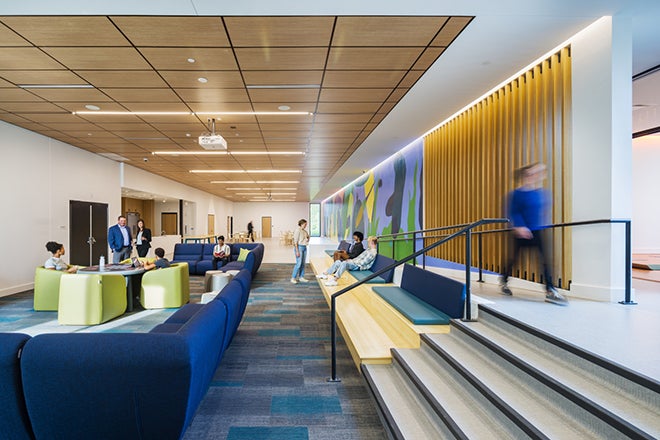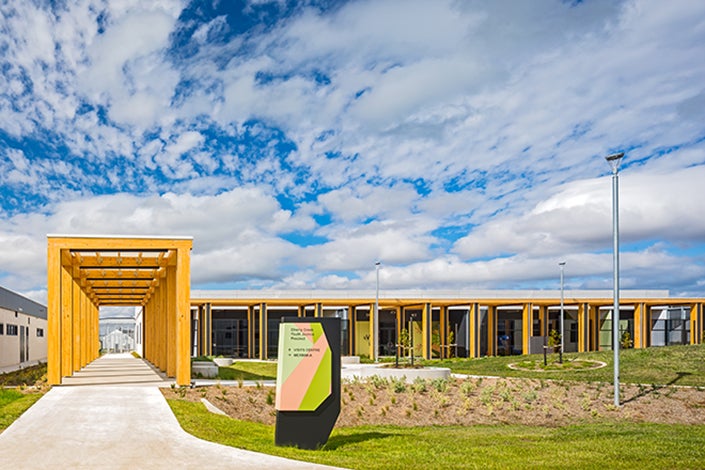
How Juvenile Justice Design Can Impact the Future of Our Youth
Design for Healing and Rehabilitation
Designing justice facilities is a great responsibility, requiring integrity and dedication to realizing the best possible outcome for all those who use the facility — from residents to visitors to staff. That responsibility is amplified when designing facilities for youth. It is well known that the built environment plays a pivotal role in successful reentry. Since nearly all youth transition back into their communities, the design and programming of these facilities is even more imperative. The opportunity to positively influence and help reduce recidivism by setting youth up for success is at the heart of our mission as designers. That’s the “why” that drives us to understand the unique needs of juveniles and how to best serve and design spaces that assist in their well-being within a secure, normative environment.
At HDR, we work with clients both in the U.S. and abroad who mirror our restorative justice principles in which secure environments can and should promote healing, learning, rehabilitation, and a healthy and positive mindset. The process of designing restorative environments can manifest in several ways, but ultimately starts with thorough research and understanding. We begin by engaging our stakeholders, including the youth residents, to fully address their needs and drive our design strategy to improve their environments and increase opportunities for rehabilitation during their time in our clients’ care and upon release.
Several of our recent youth justice projects have been highlighted and profiled for the deliberate approach we take with our clients to incorporate programming into the facility. “Programming” can oftentimes become a blanketed term that gets thrown around in the corrections industry — but much of the facility’s success in creating restorative environments that promote a continuum of care lies within the programming itself. Successful programming involves a deep understanding of the specific needs of the residents in the facility in a way that effectively improves their lives while they are in the care of the county or state.

Understanding the Youth Population
To truly address the programming needs within youth facilities, it’s important to understand all the factors that play a critical role in much of the country’s youth population. First, let’s remember that the majority of youth residents are not violent criminals. In fact, according to Richard Ross in his book titled "Juvenile in Justice," "Nearly three of every four youth confined in a residential facility for delinquency are not in for a serious violent felony crime." This statistic reminds us that it’s important to focus much more on creating restorative environments with normative design elements to help reduce recidivism and position youth for successful reentry into their communities.
Looking at the history of juvenile justice efforts helps us make better and more informed decisions in the present through the lessons learned from the past. The history of juvenile justice dates back to 1899 when the first juvenile court in the United States was founded in Chicago, Illinois. Over the past 125 years, there have been several shifts in juvenile justice — going from a focus on rehabilitation to more punitive punishment in the 1980s and 1990s, and now progressing to more evidence-based treatment options for our youth. While the approach to youth justice and the way we design continue to evolve, the key factors that our youth face remain relatively constant. Now, with a focus on evidence-based and trauma-responsive design strategies, we’re able to use that information to better design spaces to address their needs. Of the key factors plaguing our youth is the fact that early childhood trauma and mental health issues are overwhelmingly present in the juvenile population. According to the Youth and Juvenile Justice System’s 2022 National Report, “In 2019, 3.8 million youth ages 12-17 reported experiencing a major depressive episode,” while the report also notes, “Two out of every three males and three out of every four females in the juvenile justice system meet the criteria for one or more psychiatric disorders.” The Centers for Disease Control and Prevention also states that, “This early childhood trauma can have long-term effects on the child’s physical and mental health, life opportunities, and social well-being.” In addition, minority youth groups are even more prevalent, “Black youth are over four times as likely to be detained or committed in juvenile facilities as their white peers,” according to the Sentencing Project. Addressing these societal and mental health challenges within our design and programming is critical for the care and rehabilitation of our youth.

Design Principles
By incorporating evidence-based design, biophilic design principles, trauma-responsive strategies, and our approach to restorative justice, we can begin to use design to support juveniles in healing and overcoming their challenges.
At HDR, we approach youth facility design holistically and spend months collaborating with key stakeholders to learn more about the environment and factors at play, both nationally and within local communities. From there, we develop strategies to address critical needs within these unique designs. One of the critical design needs that we introduce frequently is a family unification space to spend time with loved ones in a playful, positive atmosphere. We typically incorporate the outdoors as much as we can within these spaces, which is almost park-like in nature and allows children to enjoy their time and space with those closest to them. By incorporating biophilic design principles, research has also shown that these “nature-focused” settings can alleviate stress and anxiety among staff and youth.
Another important element in youth design, which can be seen in our recently completed Cherry Creek Youth Justice Centre in Cherry Creek, Australia, is the connection to art, nature, and culture. The over 250,000-square-foot facility includes space to promote youth treatment and rehabilitation in a humane, respectful, and normative campus-like environment. Our design includes an indoor/outdoor family unification area, murals throughout the campus that tie into the local culture and tell unique stories, an outdoor garden maintained by the youth through the campus’ horticulture program, as well as innovative classroom spaces, socializing areas and rooms with their own televisions, bathrooms, and windows to view the lush outdoor environment. Working with a like-minded client who values and appreciates thoughtful design, we approached the facility design and programming with the goal of reducing offending behaviors in the community.
The Future of Our Youth
While it has been more than 12 decades since the founding of the first juvenile court in the U.S., as a society we’re still learning what it means to serve our youth. There have been positive changes in the system that put a much-needed emphasis on rehabilitation and treatment; however, we must continue to be diligent in understanding all the elements at play for youth residents and adjust our mindsets and design strategies to support them as holistically as possible. Our goal is always to create environments in which youth residents feel safe and cared for while in our client’s care, ultimately giving them as much opportunity as possible to live a full and rewarding life.
As a collaborative team of architects, designers, planners, and researchers who share a passion for improving environments, understanding the complexities of youth justice and improving systems by design is an ongoing priority for our firm. As we embark on new projects in the future, it’s imperative that we as an industry continue to use evidence-based, trauma-responsive design to help continue to raise the bar in terms of how we care for and support our youth population.
Gerry Guerrero is the global director of our civic and justice practice. With more than 30 years of experience in design and planning, as well as project management experience, Gerry’s work has been recognized and awarded by the American Institute of Architects’s Academy of Architecture for Justice, as well as the Design-Build Institute of America. This article, originally featured in Correctional News, has been republished here with permission.




